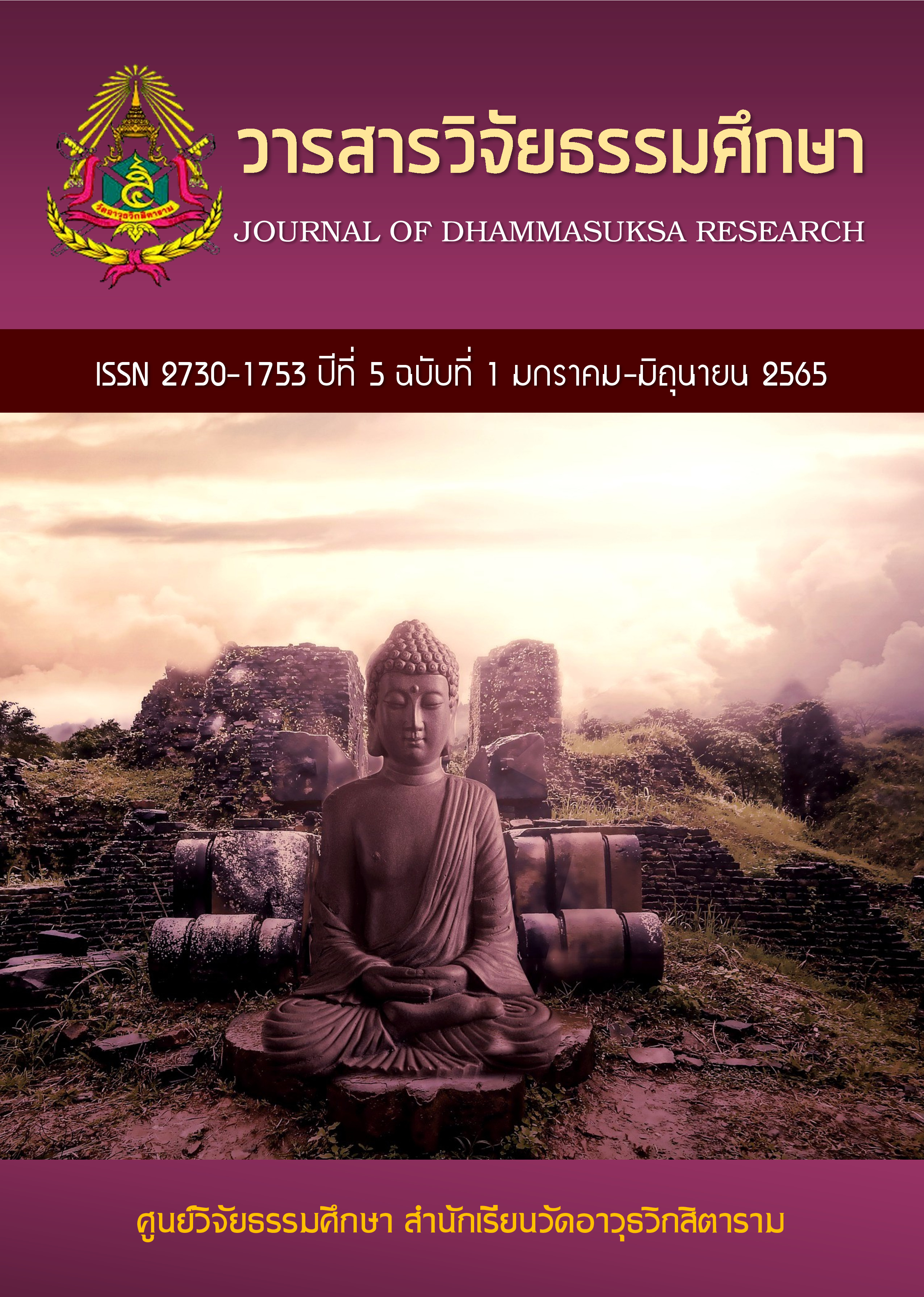Factors Related to Health Literacy on Smoking Prevention among Nursing Students in the University, Bangkok Metropolis.
Keywords:
Health Literacy, Smoking Prevention, Nursing StudentsAbstract
The purpose of this research was to study health literacy and factors related to health literacy on smoking prevention among 361 nursing students in the university. The sample was selected from purposive sampling technique. The research tool was a questionnaire consisting of general information, personal factors and health literacy on smoking prevention. The quality of the tools was examined by three experts. The confidence values were calculated by Cronbach’s alpha coefficient of 0.95 and the content validity index of 1.00, 1.00 and 0.93, respectively. Data were analyzed by using percentage frequency statistics, mean, standard deviation, Pearson's correlation coefficient and Eta correlation coefficient.
The results showed that nursing students had a good level of health literacy 87.0%, had a moderate level of health literacy 13.0%, and an average of overall health literacy was at a good level ( = 168.30, SD = 17.03). The factors were positively correlated with health literacy were statistically significant: gender (η= .122, p < .05) and grade level (η= .102, p < .05). In the most recent cumulative GPA (r = .020, p > .05), family/dependent smoking (η = .002, p > .05), exposure to or exposure to cigarette smoke (η= .060, p < .05) and smoking behavior (η= .017, p > .05) were found to be insignificantly positively correlated with health literacy. These findings are important information for planning actions to increase health literacy and further promote smoking prevention among students in the university.
References
ธนะวัฒน์ รวมสุก, สุรินธร กลัมพากร, และทัศนีย์ รวิวรกุล. (2561). ผลของโปรแกรมเลิกบุหรี่โดยประยุกต์ใช้ทฤษฎีแรงจูงใจเพื่อป้องกันโรคในผู้ป่วยโรคความดันโลหิตสูง.วารสารพยาบาล, ปีที่ 67(1), 1-10.
ลักษมล ลักษณะวิมล, เรวดี เพชรศิราสัณห์, สายฝน เอกวรางกูร และนัยนา หนูนิล. (2563). ปัจจัยที่สัมพันธ์กับพฤติกรรมการสูบบุหรี่ของเยาวชน อำเภอท่าศาลา จังหวัด นครศรีธรรมราช. วารสารพยาบาล, 69(1) : 1-9.
วิมล โรมา, สายชล คล้อยเอี่ยม, วรัญญา สุขวงศ์, ฐิติวัฒน์ แก้วอำดี, อัจฉรา ตันหนึ่ง, รุ่งนภา คำผาง และรักมณี บุตรชน. (2562). การสำรวจความรอบรู้ด้านสุขภาพของประชาชนไทย อายุ 15 ปีขึ้นไป พ.ศ. 2562. นนทบุรี : สถาบันวิจัยระบบสาธารณสุข.
ศศิธร ชิดนายี, และวราภรณ์ ยศทวี. (2561). ปัจจัยที่มีความสัมพันธ์กับพฤติกรรมการสูบบุหรี่ของวัยรุ่น จังหวัดอุตรดิตถ์. วารสารวิทยาลัยพยาบาลบรมราชชนนี จังหวัดอุตรดิตถ์, 10(1), 83-93.
ศูนย์วิจัยและจัดการความรู้เพื่อการควบคุมยาสูบ มหาวิทยาลัยมหิดล. (2563). รายงานสถานการณ์การบริโภคยาสูบของประเทศไทย พ.ศ. 2562. กรุงเทพฯ: มหาวิทยาลัยมหิดล. [เข้าถึงเมื่อ 18 ตุลาคม 2563]. เข้าถึงได้จาก: http://www.trc.or.th/th/media/attachments/2020/07/19/.-2562.pdf.
สำนักงานกองทุนสนับสนุนการสร้างเสริมสุขภาพ. (2560). คนไทยหนึ่งล้านคนป่วยจากการสูบบุหรี่. เข้าถึงเมื่อวันที่ 5 พฤษภาคม 2561, จาก http://www.thaihealth.or.th/Content/36862-คนไทยหนึ่งล้านคนป่วยจากการสูบบุหรี่.html.
อภิญญา อินทรรัตน์. (2557). ความฉลาดทางสุขภาพของผู้ประกอบวิชาชีพด้านสุขภาพ. วารสารพยาบาลทหารบก, Vol. 15 No. 3 (2014): กันยายน-ธันวาคม 2557. 174-178.
Bundhamcharoen, K., Aungkulanon, S., Makka, N., & Shibuya, K. (2016). Economic burden from smoking-related diseases in Thailand. Tobacco Control, 25(5), 532–537.
Center for Disease Control and Prevention. (2017). Health effects of cigarette smoking. Retrieved January 18, 2021, from http://cdc.gov.tobacco/data_Statistics/factsheet/health_effects/ effects_cig_smoking/index.htm.
Coleman, C., et al. (2012). The Calgary Charter on Health Literacy: Rational and core principles for development of health literacy. Retrieved January 18, 2021, from http://www.centreforliteracy. qc.ca/health_literacy/clgary_charter [November 3, 2014].
Choeisuwan V, Tansantawee A. (2018). Selected factors related to health literacy of nursing students in royal Thai Navy College of nursing. Royal Thai Navy Medical Journal, 45(2):250-66.
Nutbeam, D. (2000). Health Literacy as public health goal: a challenge for contemporary health education and communication strategies into health 21st century. Health Promotion International, 15 (3), 259-267.
Nutbeam, D. (2009). Defining and Measuring Health Literacy: what can we learn from literacy studies?. .Journal of Public Health, 54: 303-305.
Prakit Vathesatogkit and Naowarut Charoenca. (2011). Tobacco control: Lessons learnt in Thailand. Indian Journal of Public Health, 55(3), 228-33.
World Health Organization. (2009). Health Literacy and Health Promotion Definitions, Concepts and Examples in the Eastern Mediterranean Region. Individual Empowerment Conference Working Document. Paper presented at the 7th global conference for health promotion: Promoting health and development, closing the implementation gap; 2009, Oct26–30, Kenya.
World Health Organization. (2015). Report on the global tobacco epidemic. Retrieved January 18, 2021, from http://www.who.int/ tobacco/global_report/2015/report/en/.

Downloads
Published
How to Cite
Issue
Section
License

This work is licensed under a Creative Commons Attribution-NonCommercial-NoDerivatives 4.0 International License.

